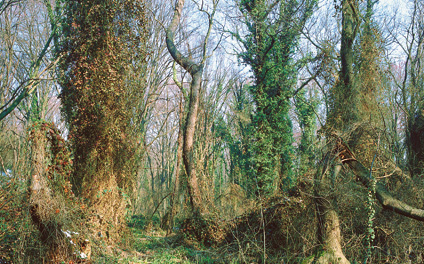English · Български


[50] Zlatni Pyasatsi
Varna District
NATURA 2000: Lycaena dispar
Coordinates: 28° 2’ 11’’ E, 43° 18’ 16’’ N — Altitude: 117 m — Area: 1371 ha
Description: The region is situated closely to the resort complex bearing the same name. The relief is hilly and has a clearly expressed landslide and steppe-like character. The boundary between the landslide areas and the plateau is marked by vertical rock wreaths, followed by several steep slopes descending toward the sea. The southern part is occupied by a number of natural swampy areas. The forests follow the coastline and surround the resort. The flora comprises 500 species of higher plants. The region is mainly covered by tree and bush communities, dominated by mixed deciduous forests of Carpinus orientalis, Quercus cerris, and Q. frainetto. There is also Tilia tomentosa, Fraxinus ornus, Carpinus betulus, and Acer campestre. The region is also grown with some plant representative of longose character like Fraxinus oxycarpa, Carpinus betulus, Populus alba, Alnus glutinosa, Prunus mahaleb, grown over with creeping plants. The bush vegetation is dominated by Fraxinus ornus, Corylus avellana, Cornus mas, Crataegus monogyna, etc.
The butterflies are not sufficiently investigated. The reasons for including the region is the presence of important populations of 3 of the target species [see a list below], especially Lycaena dispar.
— Target species: Lycaena dispar, Scolitantides orion, Melitaea trivia.

Protection & threats: The region comprises Zlatni Pyasatsi Natural Park, declared as such in 1943. According to the IUCN criteria, it has been classified as a Category 5 protected area. The main threats come from the development of Zlatni Pyasatsi Resort complex, the uncontrolled construction throughout the whole area, the busy traffic and increased human presence. The construction is so intensive that there are some places near the beach that look like housing estates. As quick preservation measures we recommend that some areas with no building or human activity be left as ecological corridors and migration routes.
Other remarks: Twenty-one rare, threatened, and protected plant species have been reported from this region. The moths have not been investigated yet. There are many moths data including conservationally important species from the areas north and south of Zlatni Pyasatsi. The only conservationally important species established from here is Euplagia quadripunctaria. It is included in Annex II of the Habitats Directive of the European Union.
Coordinates: 28° 2’ 11’’ E, 43° 18’ 16’’ N — Altitude: 117 m — Area: 1371 ha
Description: The region is situated closely to the resort complex bearing the same name. The relief is hilly and has a clearly expressed landslide and steppe-like character. The boundary between the landslide areas and the plateau is marked by vertical rock wreaths, followed by several steep slopes descending toward the sea. The southern part is occupied by a number of natural swampy areas. The forests follow the coastline and surround the resort. The flora comprises 500 species of higher plants. The region is mainly covered by tree and bush communities, dominated by mixed deciduous forests of Carpinus orientalis, Quercus cerris, and Q. frainetto. There is also Tilia tomentosa, Fraxinus ornus, Carpinus betulus, and Acer campestre. The region is also grown with some plant representative of longose character like Fraxinus oxycarpa, Carpinus betulus, Populus alba, Alnus glutinosa, Prunus mahaleb, grown over with creeping plants. The bush vegetation is dominated by Fraxinus ornus, Corylus avellana, Cornus mas, Crataegus monogyna, etc.
The butterflies are not sufficiently investigated. The reasons for including the region is the presence of important populations of 3 of the target species [see a list below], especially Lycaena dispar.
— Target species: Lycaena dispar, Scolitantides orion, Melitaea trivia.
Deciduous forest in Zlatni Pyasatsi (Photo: L. Andreev).

Other remarks: Twenty-one rare, threatened, and protected plant species have been reported from this region. The moths have not been investigated yet. There are many moths data including conservationally important species from the areas north and south of Zlatni Pyasatsi. The only conservationally important species established from here is Euplagia quadripunctaria. It is included in Annex II of the Habitats Directive of the European Union.

Map of Zlatni Pyasatsi area.